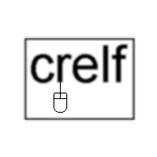-
Posts
5,759 -
Joined
-
Last visited
-
Days Won
55
Content Type
Profiles
Forums
Downloads
Gallery
Posts posted by crelf
-
-
0xXX, 0xXX, 0xXX, .... where XX is a HEX representation of a byte.
Just to confirm - your file structure is:
0xXX<space><comma>0xXX<space><comma>0xXX<space><comma> ...
where XX are your HEX characters? (it helps to attached an actual example file to clear up these misunderstandings).
-
Might just as well be...Download File:post-949-1148641916.vi
Now how did he do that?!?

-
Hey Mike - are new users forwarded on to the LAVA guidlines page after they join? Maybe we need a "I aggree / I disagree" dissemintation so we have grounds to beat them up if they don't follow them...
-
I wish you could upload an image of your diagram.
...or even attach a VI that you've already created so we could suggest modifications...
-
An approach that immediately comes to mind is using the picture control - you will need to recognize the number of unique elements and how many connections each one has and decide where in the picture you want to display each one.
I'm thinking an OO approach using the picture control would be a fast and scalable way of making this happen. Maybe Mike H. from Endevo can help out with some ideas - after all, he put together the UML Modeller which does exactly that...
-
...its the fact that the code is password protected that makes this so precious...

-
hi,
my first problem is solved!!
i now use a read from binary file!!!
how i want to grab an image from my firewire camera, compress it to .jpeg and send a binary string!!!
i saw:
http://sine.ni.com/apps/utf8/niepd_web_dis...034080020E74861
cu
Looks like you've answered all your own questions
 I've used the jpg compression VIs from the NI developer zone, and they work fine.
I've used the jpg compression VIs from the NI developer zone, and they work fine. -
I think that to see why this was nominated here you have to actually open the VI
I opened and ran the code - all I can say is that I'd love to see the block diagram, but it's password protected

-
Hey Philip - you're famous!

-
My eyes are completely burned now. I can't see! I CAN'T SEE!

My work here is done
 This is the worst I've seen in a while.
This is the worst I've seen in a while.When I went to that page, I thought "Fair enough, don't think I'd ever need it, but okay if that person needs something like that in their personal toolkit", and then after a few seconds I thought "Hang on a minute..."
-
Here's a new one for the worst of the net

-
Colin: You speak of "partnership" repeatedly. So, what has NI done (or is NI planning to do) to partner with LAVA and other independent LabVIEW resources? There are several NI employees who do provide regular high-quality contributions to LAVA, in the form of forum participation, and I think that's great. However, I think that NI could do a whole lot more. Also, NI needs to realize that we are not very interested in partnerships that co-op our efforts for NI's direct benefit.
Colin: have you anything further to add regarding partnerships?
-
Yeah, if a 1553 implementation had to share space with the CVS control on an FPGA, it could be rather painful. Doing 1553 like this would probably be a huge time sink, which is probably part of the reason the available vendor solutions tend to be so expensive. What little I know about 1553 tells me enough that I would not want to have to build something to do it from scratch!
Thanks Pete - I figured as much. Implementing a more simple comms protocol in FPGA might be less frightening, but I totally agree with the time skink comment - trying to get 1553 into FPGA could take up half of the project, and I don't think it's worth it.
-
:thumbup: Thanks for all the info folks - once again, the breadth of knowledge here on LAVA has made it well worth the miniscule premium subscription price! Terry - thanks especially to you for the links to the comprehensive 1553 resources.
It's just as I'd thought - I'll be pushing our client toward 422. Unfortunately, as we need to use the CVS, there isn't any practical way to do 1553 coms (unless we write our own FPGA driver and download it into the CVS's FPGA, but there's only half a million gates to play with there, and I figure that 1553 would be more comprehensive than that). Thanks again for a little clarity

-
-
I thought the point was to get rid of the subVIs.

That wasn't my point - I was trying tp point out that scripting is more capable in general than what you said - I should have prefaced my post with: "Although it's not going to help you in this instance, scripting is more capable than..." etc
-
What are you trying to do with this device?
You're so nosy! (and I like it
 ) I have an application that would mostly be excellent for the NI CVS except that I might need to do 1553 as well (I'm pushing for 422 as it might be an option). The application has very strict space and mass requirements so netwroking out to a PC who's function is just to talk 1553 isn't an option. That said, maybe we can go out to a PC-104 implementation...
) I have an application that would mostly be excellent for the NI CVS except that I might need to do 1553 as well (I'm pushing for 422 as it might be an option). The application has very strict space and mass requirements so netwroking out to a PC who's function is just to talk 1553 isn't an option. That said, maybe we can go out to a PC-104 implementation... -
Hi All,
Has anyone worked with the MIL-STD-1553 bus before? Specifically, is it possible/practical to convert between 1553 and RS-232, or between 1553 and Ethernet?
-
I haven't played much with dynamic code generation, but as far as I know this is more complex than copying and pasting - you have to select only functions and wires (not terminals) and then you have to replace the existing code and link the pasted code to the appropiate place.
You can paste exisiting VIs on to the block diagram of a VI and then wire it up.
-
You're right, but sometimes its less annoying to give them the answer, especially when a language barrier is in the way. Won't let it happen again.
No worries bbean. Oh, and by the way, welcome to LAVA!
-
I had tried out the "index array", but still cannot get the result.
Index array will select an array element - you want to seach an array. Check out the other primatives on the palette and the LabVIEW help.
See attachments.Whoa there - the general method of assisting Homework Hustlers is to guide them to the answer with the hustler showing their progress at each step, not just do the assignment for them.
-
...Sometimes it is screwy with binaries...
What do you mean by "screwy"?
-
You might be able to use the target="_blank" HTML tag - do a web search on it and have a look at how it is used.
P.S.: Oh, and of course it would be better to use ActiveX, in your browser allows for it.Wellll - yes and no. It depends on what you're trying to acheive: ActiveX is a very specific call into the engine, and replying on it means that you may be relying on that your users have the same version of windows that you do (Microsoft can, and does, change ActiveX prototypes and availabilities between versions). Also, using ActiveX isn't platform independant. The upside of ActiveX (especially in this case) is that you can embed an ActiveX window in your LabVIEW front panel and run your web browser there (see example below).
-
i cannot get the row number correctly.
This is seriously in the wrong forum - you've posted it to "Remote Control, Monitoring and the Internet", and it looks more like homework to me...
Anyway - here's a suggestion: try converting your input string to an array ("Spreadsheet string to array") and then searching the resulting 2 dimensional array...




Programmatically showing tip strips
in User Interface
Posted
Use the event structure creativly - have a case that looks for a key down in all of the string controls, then the event case will return a control reference (through a node on the left of the structure) - pipe that into a property node and get the string out of the control and then use the above method from there...